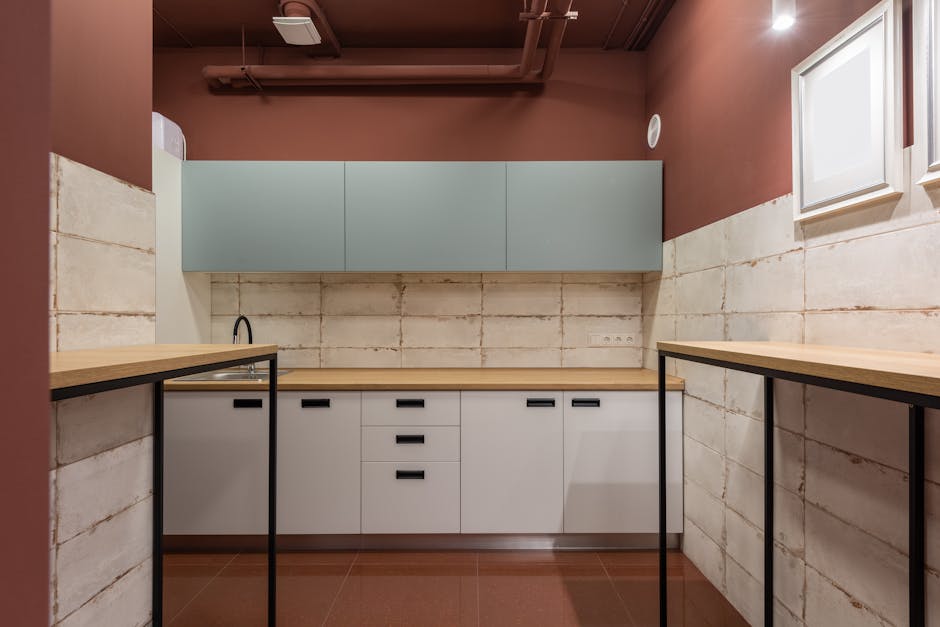How to Choose the Perfect Countertops for Your Kitchen
Choosing the perfect countertops for your kitchen is one of the most important decisions when it comes to designing or remodeling a kitchen space. Countertops not only affect the overall aesthetic but also play a critical role in the functionality and durability of your kitchen. With so many materials, colors, and finishes available today, finding the right fit can sometimes feel like a balancing act between practicality and style.

It’s essential to consider factors such as durability, maintenance, and cost before making a decision that suits both your lifestyle and budget.
Material Options: Pros and Cons
One of the first things to consider when selecting kitchen countertops is the material. Each material has its own set of advantages and potential drawbacks. Understanding these can help you make a more informed choice based on your specific needs.
Granite is one of the most popular countertop materials due to its natural beauty and durability. Granite is heat-resistant, scratch-resistant, and comes in various patterns and colors. It requires periodic sealing to prevent stains from absorbing into the stone.
Quartz, another popular option, offers a non-porous surface that doesn’t require sealing. It’s highly resistant to stains and scratches, making it ideal for busy kitchens. Quartz countertops are often engineered from natural quartz mixed with resins, giving them consistent patterns and colors. A downside is that quartz can be more expensive than other materials.
Marble provides a luxurious look but requires more care than granite or quartz because it’s softer and more porous. Marble can easily stain if exposed to acidic substances like lemon juice or wine.
Laminates are an affordable alternative for homeowners on a budget. They come in various designs that can mimic more expensive materials like granite or wood. Laminates are not as durable as stone or quartz options and may show wear over time.
Cost Considerations
While aesthetics play an important role in choosing countertops, it’s equally crucial to stay within budget. The cost of countertops varies significantly depending on the material chosen.
A table summarizing different price ranges for common countertop materials can provide clearer insight:
| Material | Price Per Square Foot (Approximate) |
|---|---|
| Granite | $40 - $100 |
| Quartz | $50 - $120 |
| Marble | $60 - $200 |
| Laminate | $10 - $40 |
It’s essential to factor in not only the initial cost of the material but also installation fees and long-term maintenance costs such as sealing or repairs. While some materials like granite may have higher upfront costs, their durability can make them more cost-effective in the long run.
Durability and Maintenance Requirements
The durability of your countertops should align with how much activity your kitchen sees. Families with young children might prioritize materials that are easy to clean and resistant to scratches or stains. Meanwhile, home chefs who regularly use hot pots or sharp knives should seek surfaces that won’t be easily damaged by heat or cutting.
- Granite: Extremely durable but requires sealing every one or two years.
- Quartz: Durable and low-maintenance due to its non-porous nature.
- Laminates: Affordable but prone to scratching; not heat-resistant.
- Marble: Requires regular care to avoid staining and etching from acidic foods.
If you’re looking for low-maintenance options, quartz is often recommended due to its non-porous nature. On the other hand, homeowners who don’t mind regular upkeep may opt for natural stones like granite or marble for their unique patterns.
Aesthetic Appeal: Finding Your Style
The visual appeal of your countertops can make a significant impact on your kitchen's overall design. Modern kitchens often feature sleek quartz countertops with minimalist designs, while traditional styles may lean toward natural stones like marble or granite with intricate veining.
The color palette you choose should complement your cabinets, flooring, and backsplash tiles. Lighter tones like white marble can create a sense of space in smaller kitchens, while darker granites add depth and richness to larger spaces. Some homeowners prefer bold statement pieces like exotic granite slabs with dramatic veins as focal points in their kitchens.
Sustainability: Eco-Friendly Countertop Options
An increasing number of homeowners are seeking environmentally friendly options when choosing their kitchen countertops. If sustainability is a priority for you, there are several eco-conscious choices available.
Recycled Glass Countertops: Made from repurposed glass shards embedded in resin or concrete, these countertops offer a vibrant look while reducing waste sent to landfills.
Bamboo Countertops: Although less common than stone options, bamboo is renewable and sustainable due to its fast growth rate. It’s also naturally resistant to bacteria, making it a hygienic option for kitchens.
The Importance of Professional Installation
No matter how beautiful or durable a countertop material is, improper installation can cause issues down the road. Uneven surfaces may lead to cracks or water damage over time. Professional installers ensure that your countertop fits seamlessly with your cabinets and appliances while accounting for any unique features such as sinks or cooktops.
A professional installer will also take into account factors like leveling cabinets before installing heavy stones such as granite or marble. While DIY installation might be tempting for those looking to save money upfront, hiring experienced contractors ensures longevity and proper functionality of your countertops, saving you costly repairs later on.
Finding the Perfect Balance Between Style and Functionality
Selecting the ideal countertop for your kitchen comes down to balancing factors like appearance, durability, maintenance needs, and budget considerations. Materials such as granite offer timeless beauty combined with strength but require regular upkeep; meanwhile, quartz provides a low-maintenance solution at a higher cost point. For those prioritizing affordability without sacrificing design flexibility, laminate remains an accessible choice despite its limitations in durability.